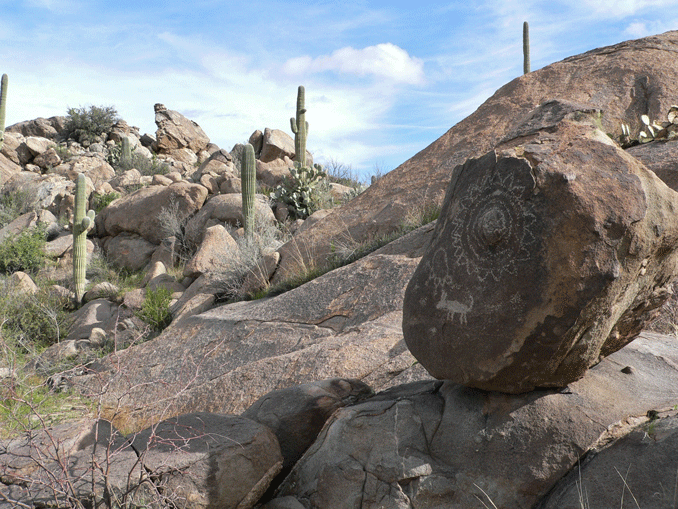Janine Hernbrode and Peter Boyle – “Hohokam Petroglyphs at Sutherland Wash: Flower World and Gender Imagery”

A place of special significance to the late Preclassic Hokokam is located at the base of the western slope of the Santa Catalina Mountains near Tucson. Taken in context with other anthropological information, it appears that Sutherland Wash Rock Art District was a ceremonial place with emphasis on the Uto-Aztecan Flower World. Flowers hold special meaning to speakers of Uto-Aztecan languages representing a spiritual landscape, a flowery, colorful, glittering paradise, that can be evoked through prayers, songs and other human actions. Previously reported in kiva murals and ceramics, Jane H. Hill suggested that such imagery might also be found in rock art.
A rich set of data recently created by a team of volunteers from AAHS and the Arizona Site Stewards includes a detailed recording of 3,251 prehistoric petroglyphs, a variety of surface features, artifacts, trails, solar markers and the results of a rudimentary acoustic experiment. In these data we found three important lines of evidence suggesting the special significance of Sutherland Wash. The first is the Flower World complex which is evident not only in petroglyphs representing both realistic and abstract flowers but also in glyphs depicting important related imagery including birds and butterflies. Second, the importance of gender is apparent in many male and female anthropomorphs, vulva forms, family groups, birthing scenes, and a landscape that includes yoni and phallus formations. Third, the interaction of sunlight and shadows with some of the panels clearly marked the equinoxes and solstices; one panel is a compelling horizon marker at the summer solstice involving Romo Peak where copper bells of Mesoamerican origin were found in the 1940s.
 All Posts
All Posts